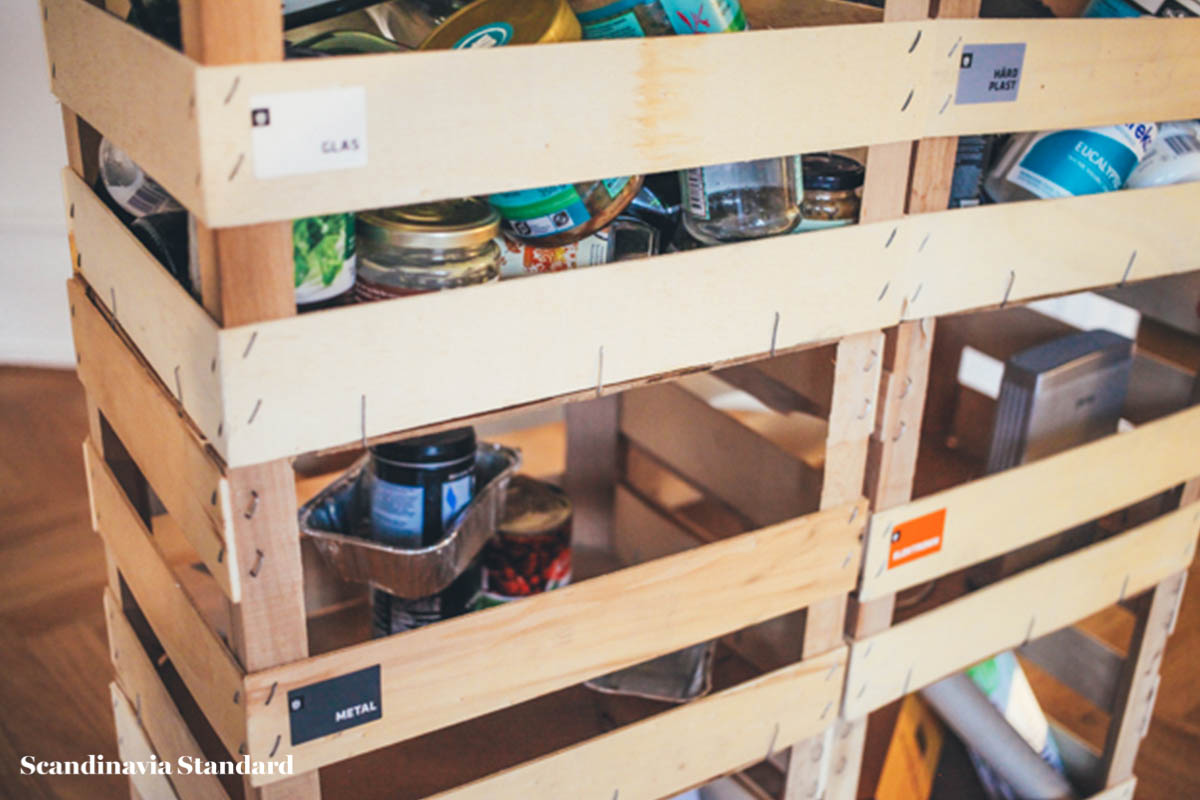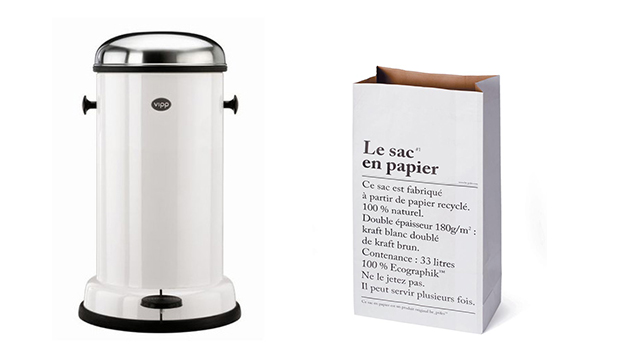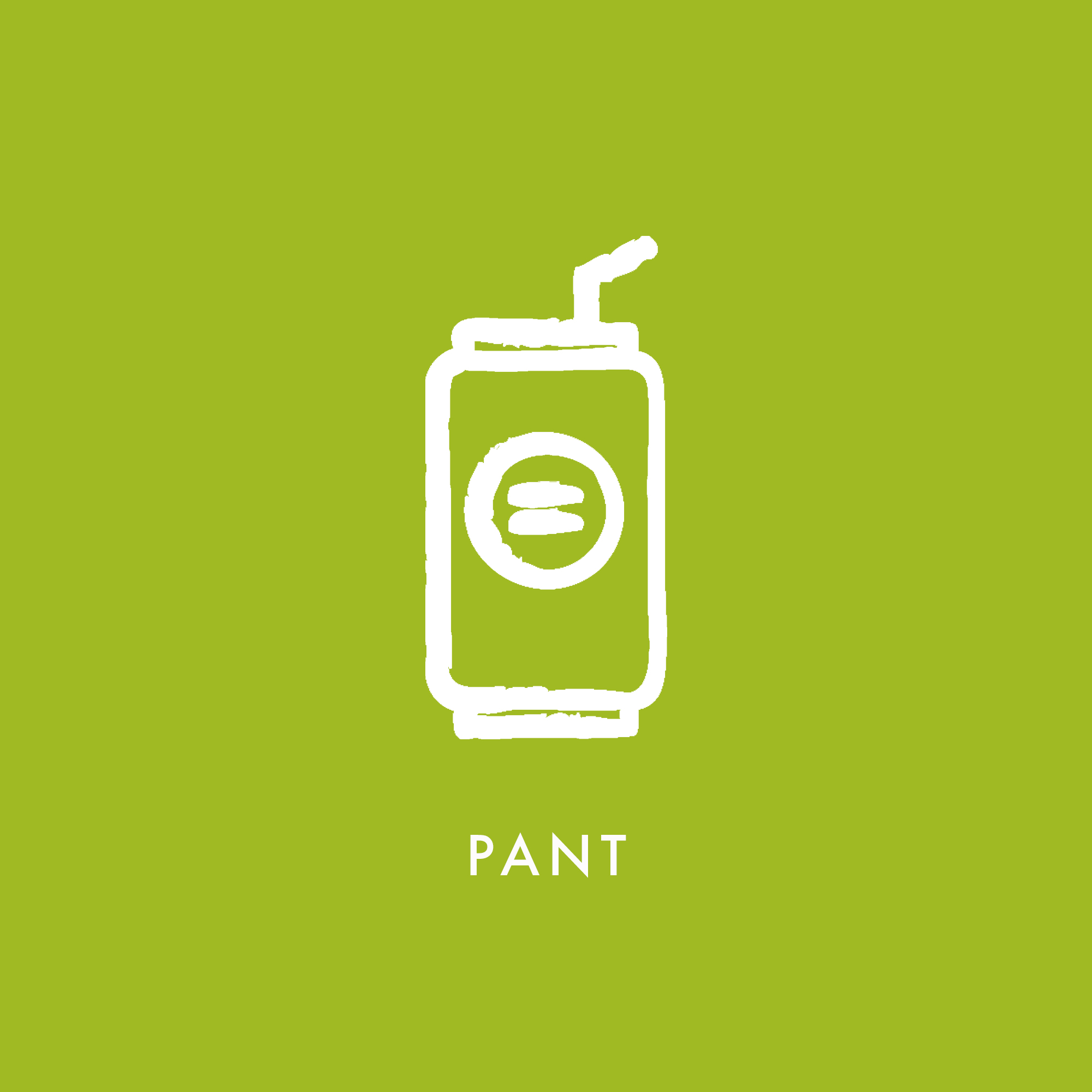So you’ve moved to Denmark, bought a bike, you’ve converted to organic milk and even avoid fast fashion in favour of sustainable Scandi threads! But what about recycling? Oh dear! How will you be able to fully realize your environmental superiority complex if you fail to master this last hurdle, my Scandi-phile friend?
At the beginning of 2014, Københavns Kommune finished its massive recycling project that provided recycling bins to all the neighbourhoods of Copenhagen (and living in the centre, I was the last to know). Hallelujah!
This upgrade allowed Copenhageners to actually recycle our plastics, paper and metal conveniently from our own apartment blocks, rather than having to visit the local recycling centre with a motorcade of bikes (cyclecade perhaps?). And I kid you not: this is what we had to do when I moved here in 2012.
For such a green city, Denmark has been a little slow on the recycling front, as policy favoured incineration for heat and energy rather than recycling. The city changed its tune in 2012 and access to recycling bins has improved ever since. It would be great if there was better access to recycling bins in public spaces, but all the same, Copenhagen’s latest undertakings have been a step in the right direction.
Why is recycling even important?
In theory, we all understand the importance of recycling. I could wax lyrical about how we live on a planet with finite materials, how recycling decreases pollution and reduces the need to harvest new raw materials, et cetera et cetera.
Practically speaking, however, it isn’t that easy. Let’s face it: recycling can be really inconvenient.
Plus, we all hear stories and wonder: do they actually recycle materials in Denmark? Or do our carefully sorted takeaway assortment just end up in the waste incinerator at Amager Forbrænding?
Knowing what you can recycle in Denmark is confusing, and can vary from municipality to municipality, year to year! Ask your average Dane whether you can recycle a milk carton and they might just shrug! Do we foreigners have a hope?
Inconvenience, doubt and confusion is a toxic combo, so we’re here to put your mind at ease!
How can you recycle properly in Copenhagen?
The rules are many and varied… but let’s break it down into steps:
1. Creating your own home recycling system and develop rituals for making recycling easier
2. Know what you can recycle
3. Get money back with the Danish Return System
4. Do this consistently!
 Set up your recycling system
Set up your recycling system
Crates from Aarstiderne, an organic farm located north of Copenhagen that delivers direct to your door, are perfect for creating your own recycling system. Simply collect them, stack and label. Done. Easy.
 | |
 | |
 |
Alternatively, there are these or these from IKEA which would do the trick!
Having two bins in your office and bathroom is a great idea. Think about how many toilet paper rolls you’ve thrown out in your life! A combination of ‘Le Paper Bag’ and a Vipp bin works really well. Better yet, wouldn’t it be great if Vipp released a bin with a divider in it?

 Know what and where you can recycle
Know what and where you can recycle
Once and for all, here’s an explanation of all those Danish recycling categories:
Cardboard (Pap) | Pastic< (Plast)/a> |
Paper (Papir) | Metal |
Glass (Glas) | Hazardous waste (Farligt affald) |
Waste (Dagrenovation) | Bio waste (Bioaffald) |
Electronic waste | Garden waste (Haveaffald) |

Cardboard (Pap)
- Boxes, packaging, corrugated cardboard, toilet paper rolls.
- Place in the container labelled ‘PAP’ that is set up in most apartment blocks.
- Cardboard can only be reused if it’s clean! Also, cardboard and paper have different properties and are processed separately, therefore, do not mix them together when you sort them.
| |
|
No, because the cardboard needs to be clean in order to be recycled. This seems incredibly wasteful – surely we should start using baking paper or something? Or would that be a waste of more resources? These are the questions!
 |
|
At long let, yes! In 2020 the Danish government released their Tetra Pak plan and we were able to begin recycling them in Copenhagen from July 2021. Good news!

Paper (Papir)
- Newspapers, magazines, junk mail, envelopes, phone books, office paper, gift wrapping paper, books, printed matter and writing paper.
- Place in the container labelled ‘PAPIR’ that is set up in most apartment blocks.
- Plastic film and staples needs to be removed – doing this increases the chance that it will actually be recycled.
 |
|
These will be removed in the recycling process, but removed them where possible!
| |
|
Like staples, these will be removed in the recycling process, it’s no biggie.
Glass (Glas)
- All types of empty glasses and bottles that aren’t covered by the PANT (money-back) scheme – such as wine and spirits bottles, glass from foods, broken glass, drinking glasses and glass jars.
- Place in one of the municipality’s glass containers, which are on streets all across Copenhagen. Find your nearest one here.
 |
|
You sure can, and it will also be recycled.
 |
|
There’s no need, but it’s a good idea to clean jars out first.
 |
|
Mugs, plates and other ceramics cannot be melted together with ordinary glass. Small pieces of ceramics must be thrown out of your ordinary rubbish. Larger quantities should be delivered to a recycling centre separately. Crystal glass must not be melted down and recycled with ordinary glass because it contains lead.

General Waste (Dagrenovation / Restaffald)
- General waste, milk cartons, pizza boxes and other greasy cardboard and paper, ordinary light bulbs, diapers, hygiene waste, styrofoam, and animal litter.
- If you put your mind to it, you can dramatically reduce this category – that is the aim after all!
- FYI: this rubbish will be taken to an incineration plant, burnt and converted into electricity and district heating.

Electronic Waste (Elektronik)
- Wires and cables, any electric device with a power cord, batteries or solar panel. e.g., computers, stereos, microwave ovens, cell phones or battery operated toys.
- Place in the container labelled ‘ELEKTRONIK’ that is set up in most apartment blocks.
- Large electronics waste must be delivered to a recycling centre separately.

Plastic (Plast)
- Bottles, containers and canisters from fluid cleaning and laundry detergent, milk crates, empty CD cases, plastic plates, lunch boxes, dish tubs/trays and plastic containers for storage of food and plastic toys.
- Place in the container labelled ‘PLASTIK’ that is set up in most apartment blocks.
- Plastic is one of the most important things to recycle, because so much oil is used in the production of new plastics. In addition, CO2 emissions can be reduced dramatically by removing plastics from your general rubbish, thus avoiding the incineration plant and going up in smoke.
 |
|
You can, but there’s a high chance that the automatic machines won’t process them. København Kommune is working on improving the process at the moment. All the same, go ahead, just make sure you clean them and take off all the plastic film.

Metal (Metal)
- Pots, pans, utensils, cans, nails, toys and non-electronic tools.
- Place in the container labelled ‘METAL’ that is set up in most apartment blocks.
- You can even recycle aluminium from food (i.e. leverpostej, if that’s what you’re into), just make sure it’s clean!

Hazardous Waste (Farligt Affald)
- Dangerous Materials; for example, turpentine, paint and chemicals, medicine residues, mercury thermometers and batteries.
- Not all properties have a container labelled ‘FARLIGT AFFALD’, but some do. If you don’t have one, you need to visit your local recycling centre. Most apartment blocks have a battery container for used batteries.

Bio waste (Bioaffald) 
- You can now compost in Copenhagen! Composting includes food, eggs shells, tea bags (remove the tag and staple!) and other biodegradable material like cat hair (but does not include animal waste).
- You can get a compost container and biodegradable bags for your home or apartment here. You can order a new green organic bin or new biodegradable bags for free if you live in the municipality of Copenhagen.
But wait, there’s more!
 Get Money Back with the Danish Return System
Get Money Back with the Danish Return System
In Denmark, you received your money back (‘pant’) when you return ‘pant-labelled’ bottles to the supermarkets and ‘pant stations’.

Pant (Deposit)
Glass bottles 0.5 litres or under |
|
Glass bottles more than 0.5 litres |
|
Plastic bottles less than 1 litre |
|
Plastic bottles 1 litre and over |
|

 Do this consistently; now you’re a recycling pro!
Do this consistently; now you’re a recycling pro!
Yeah. (Pat on the back.)
A big thanks goes to Københavns Kommune for being so helpful with supplying information!
Icons by Ralf Schmitzer.
Psst! We are developing a new recycling system.
– Better sorting in the home, office and event spaces
– Empowers citizens to to consume greener products
– Holding corporations accountable to the packaging they produce
Interested?


